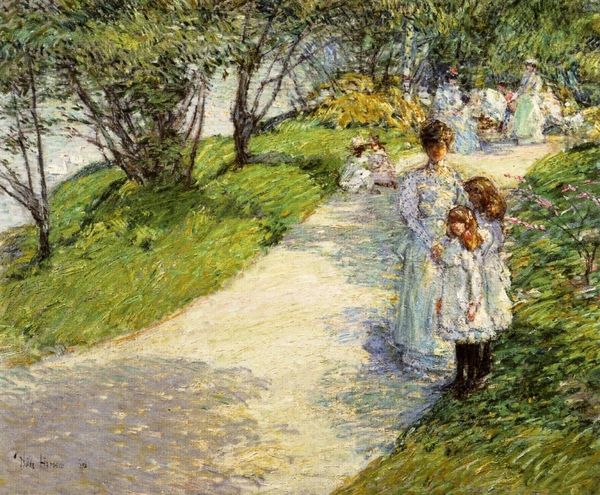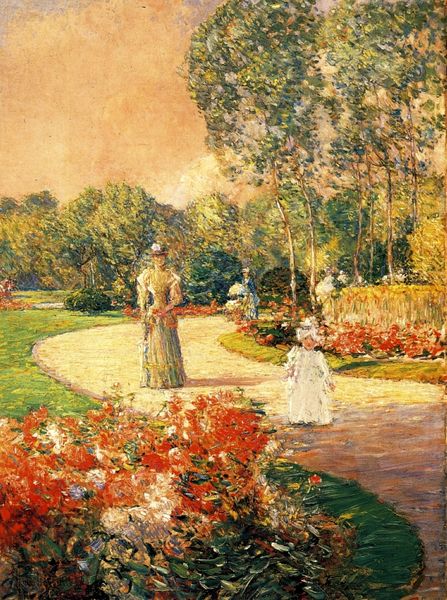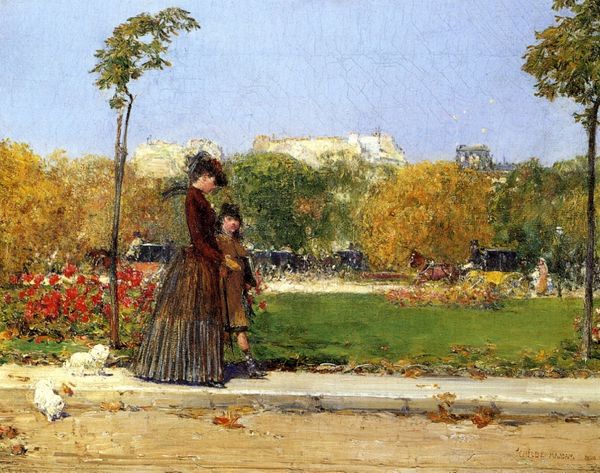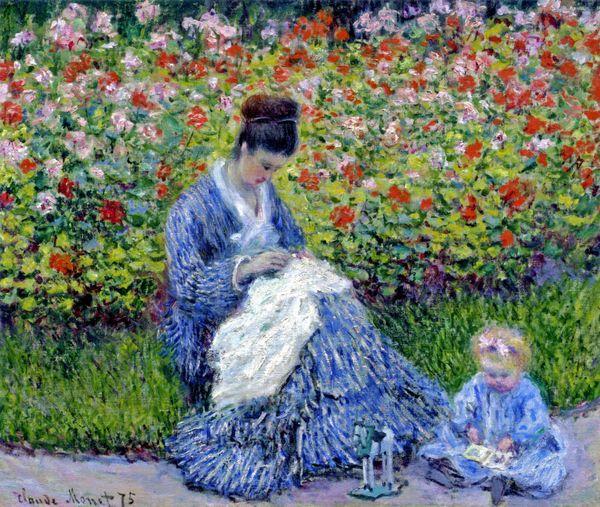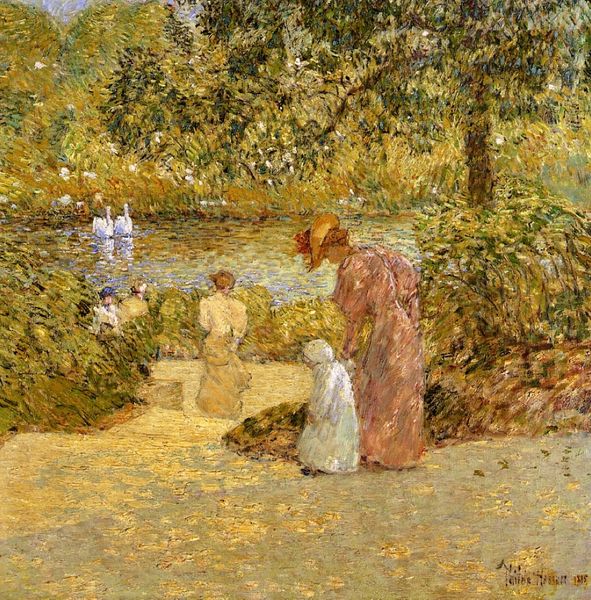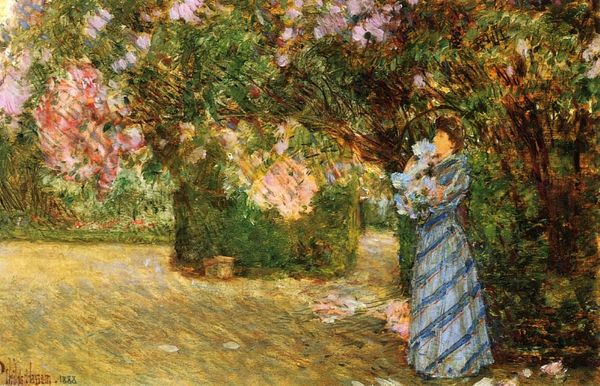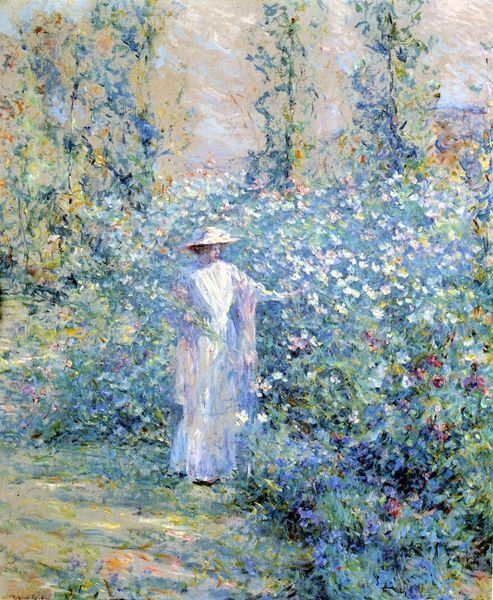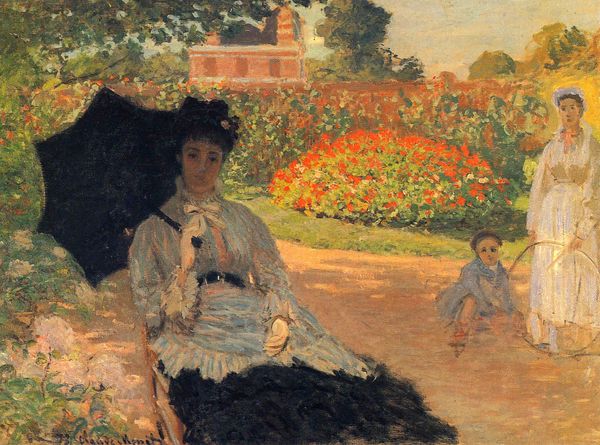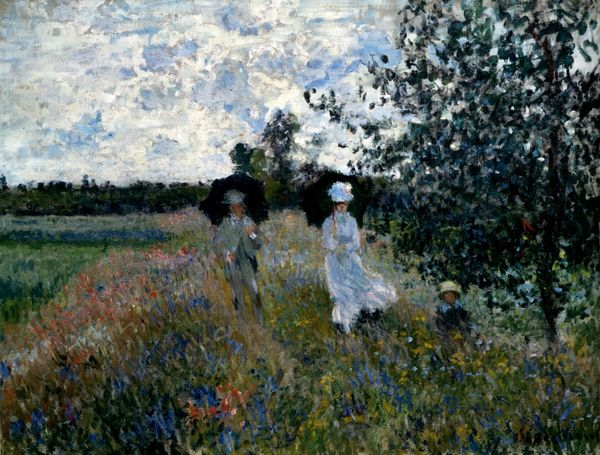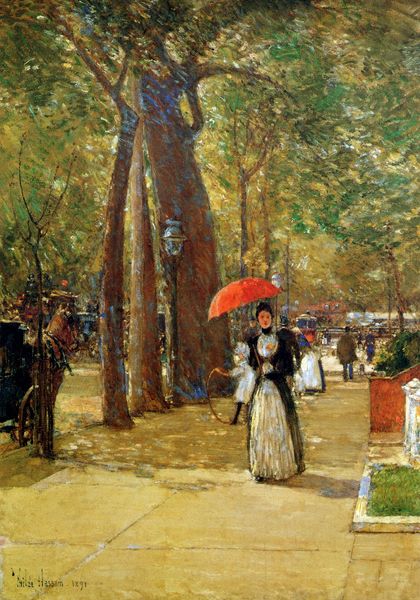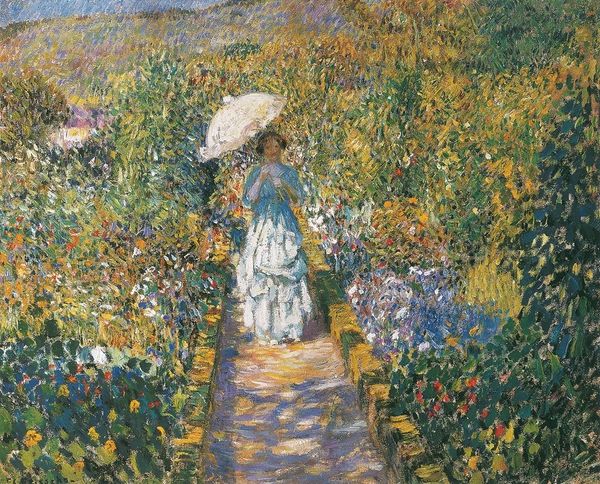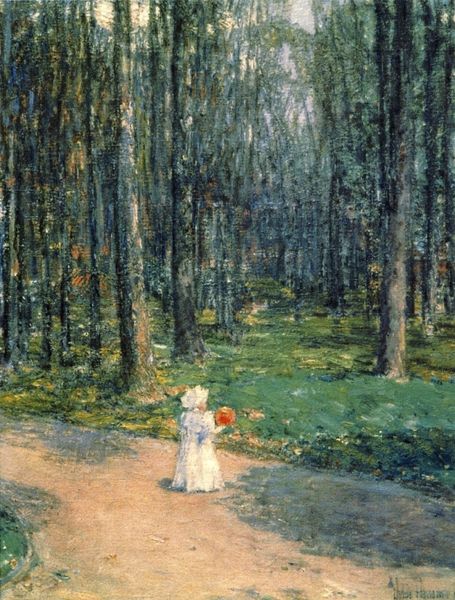
Copyright: Public domain
Curator: Standing before us is Childe Hassam’s "Spring in Central Park," painted in 1898 using oil paint on canvas. Doesn't it just exude a sense of tranquility? Editor: It does, almost oppressively so. The dappled sunlight creates a veil, softening everything. Is this supposed to be a vision of carefree leisure? Because to me it seems a rather guarded paradise, especially given the women dressed in a manner that is meant to express the opposite. Curator: Ah, but think of Central Park as a carefully designed, idealized version of nature itself. Consider how the symbol of the garden, since ancient times, has reflected an ordered and cultivated world, providing not just physical beauty but also a sense of psychological respite from urban chaos. Editor: Respite for whom, though? The leisurely figures populating the park are clearly members of the upper crust, their fashionable clothing underlining their social position. We must keep in mind the vast inequalities that characterized the Gilded Age. For whom was Central Park truly accessible? Who was meant to be observed, and who was doing the observing? Curator: That's an interesting perspective. Perhaps the painting, through its hazy, almost dreamlike quality, subtly acknowledges the fragility of this seemingly perfect world, its remove from the harsh realities faced by many. But still I insist, consider the historical context: at that point, even having these controlled settings was something new in a time when urban landscapes were defined by chaos. Editor: And chaos usually means: poorer people struggling to co-exist within urban sprawls controlled by a wealthy minority. True, there’s an undeniable beauty in Hassam’s brushwork, the way he captures the play of light and shadow but isn’t that kind of painterly beauty complicit when it does nothing to challenge social structures or, indeed, call them into question? It almost feels deliberately pleasant, doesn't it? Curator: It's precisely this capturing of light that is the symbolic intent. Hassam, as an Impressionist, would have seen a moment like this in Central Park to reveal deeper truths about beauty inherent in that intersection. Remember the sun here as a metaphor. Editor: A fleeting moment, preserved for a privileged few. Even in art, space, representation and leisure have not been for all people across identity lines to share in similar forms or manners. This painting underscores that disparity. Curator: Ultimately, this is where we differ but I will concede to looking at this as more of a social document instead of something meant only to reflect pleasant beauty. Thank you. Editor: Of course. I agree with what you pointed out about symbols—I have my considerations too.
Comments
No comments
Be the first to comment and join the conversation on the ultimate creative platform.
